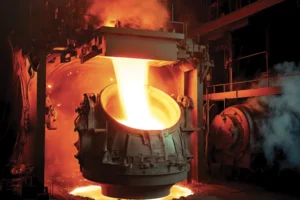Employee share ownership
Pinpointing key resources and extracting untapped potential

alister: crafting synergies between shareholders and employees
alister has developed specialized expertise in supporting businesses seeking to integrate employees into their share capital, ensuring greater cohesion and alignment with the company’s project.
Employee share ownership:
leveraging performance
Employee share ownership serves as a powerful tool for aligning the interests of employees, shareholders, and executives, while fostering improved business performance.
In this context, alister assists clients in designing and implementing performance-based objectives—whether individual or collective—rewarded through the allocation of equity with preferential rights.

Executive employee share ownership:
building a new governance model
Putting into place an executive employee ownership structure enables management staff to benefit from mechanisms for progressive and collective participation in the company’s equity as a reward for their commitment to the business’s objectives.
Executive personnel ownership structures can also lay the groundwork for reshaping corporate governance and preparing for business succession, incorporating Environmental, Social, and Governance (ESG) principles.


From reality’s complexity
to the clarity of the solutions we deliver
Expert solutions for your sucess
With these goals in mind, alister has developed technical expertise in legal, tax, and employment structuring to secure the success of your employee share ownership models.
This expertise enables us to anticipate and secure the operations, and implement tailored solutions adjusted to your company’s needs and objectives.

1- Legal, tax, and employment structuring to assess the implications of an employee share ownership plan

2- Selection of the optimal employee share ownership structure
- Issuance of warrants or founder shares (BSA, BSPCE);
- Issuance of subscription or purchase options, commonly referred to as "stock options";
- Allocation of free shares;
- Preferential shares;
- Employee savings plans.

3- Support and negotiations
- Presentation of employee share ownership structure(s) to stakeholders;
- Negotiation with employee representative bodies;
- Liaison and coordination with relevant parties (regulatory authorities, health and safety committees or other employee representation committees, banks, investment funds, etc.).

4- Designing a long-term development plan
- Defining detailed requirements;
- Establishing a timeframe;
- Drafting a shareholder agreement tailored to the integration of employees into the company’s capital;
- Drafting the necessary legal documentation.
Team Members
Contact us !
Any questions?
Contact us !










